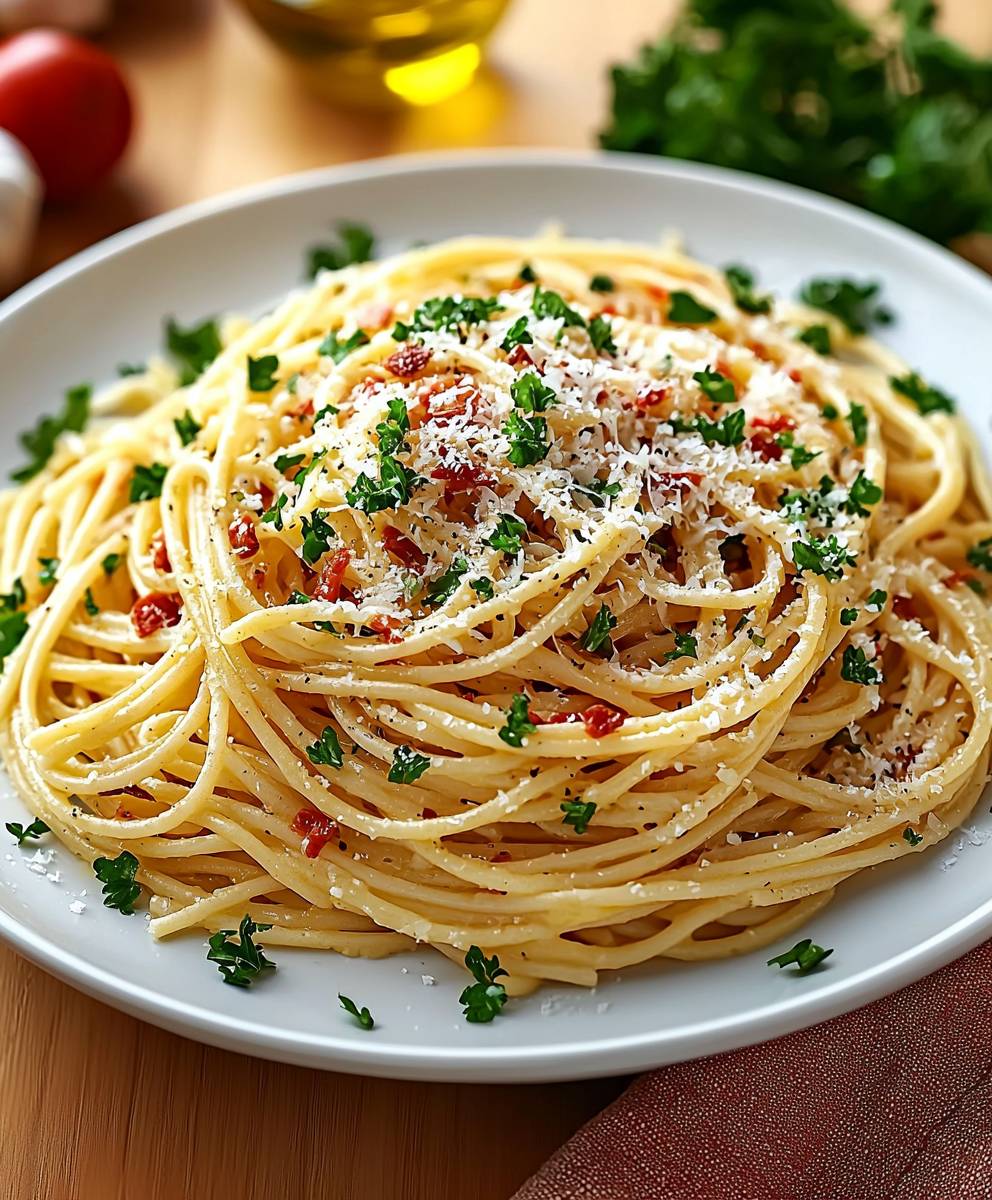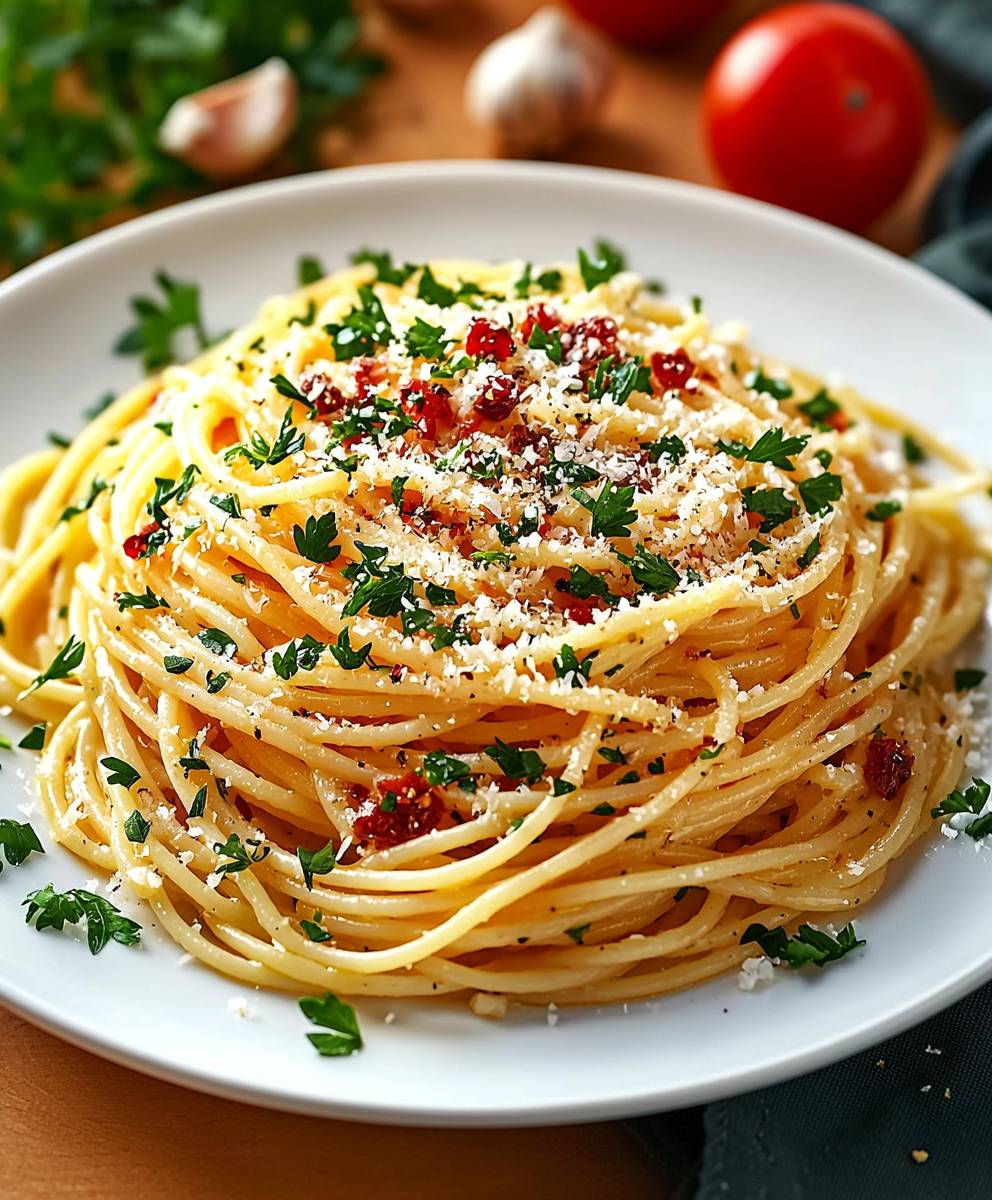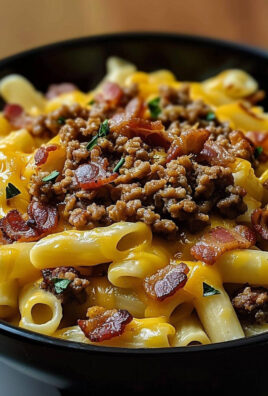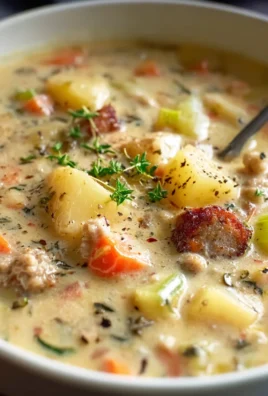Spaghetti Garlic Oil, or Aglio e Olio as it’s known in Italy, is a dish that proves simplicity is the ultimate sophistication. Have you ever craved a meal that’s bursting with flavor, ready in minutes, and requires minimal ingredients? Then look no further! This humble pasta dish is a culinary masterpiece that has graced tables for generations, offering a taste of authentic Italian comfort food.
Originating from Naples, Aglio e Olio was born out of necessity, a testament to the resourcefulness of Italian cooks who could create magic with just a few pantry staples. It’s a dish steeped in history, a symbol of the “cucina povera” – the cuisine of the poor – where simple, readily available ingredients were transformed into something truly special. But don’t let its humble origins fool you; this dish is anything but bland!
People adore spaghetti garlic oil for its incredible flavor profile. The pungent garlic, infused into the rich olive oil, creates a savory base that’s perfectly balanced by the slight heat of red pepper flakes and the freshness of parsley. The texture is equally appealing – perfectly cooked spaghetti, coated in a glistening, flavorful sauce. It’s quick, it’s easy, and it’s utterly delicious. What’s not to love? So, let’s dive in and learn how to make this classic Italian dish!
Ingredients:
- 1 pound spaghetti
- 1/2 cup extra virgin olive oil, plus more for drizzling
- 8-10 cloves garlic, thinly sliced
- 1/2 teaspoon red pepper flakes (or more, to taste)
- 1/4 cup chopped fresh parsley
- 1/4 cup grated Parmesan cheese, plus more for serving
- Salt and freshly ground black pepper, to taste
- 1 cup reserved pasta water
Preparing the Garlic and Oil:
- Start by prepping your garlic. This is crucial because you want it to cook evenly and not burn. Thinly slice each clove. I find that using a mandoline slicer can help achieve uniform slices, but a sharp knife works just fine. Just take your time and aim for consistent thickness.
- Choose your pan wisely. A large skillet or sauté pan is ideal. You want enough surface area to allow the garlic to infuse the oil properly. Avoid using a pot with high sides, as this can trap steam and prevent the garlic from browning evenly.
- Add the olive oil to the pan. Use good quality extra virgin olive oil for the best flavor. Don’t skimp on the oil; it’s the foundation of this dish! Pour in the 1/2 cup of olive oil and place the pan over medium-low heat. The key here is low and slow. We want to gently infuse the oil with the garlic flavor, not burn it.
- Add the sliced garlic to the oil. Make sure the oil isn’t too hot before adding the garlic. You should see gentle bubbles forming around the garlic slices. If the garlic starts to sizzle aggressively, reduce the heat immediately.
- Cook the garlic slowly. This is the most important step. Cook the garlic for about 8-10 minutes, or until it turns a light golden brown color. Watch it carefully, as it can go from golden to burnt very quickly. Burnt garlic will make the dish bitter, so patience is key. Stir the garlic frequently to ensure even cooking. You’ll know it’s ready when it’s fragrant and slightly crispy.
- Add the red pepper flakes. Once the garlic is golden brown, add the red pepper flakes to the pan. This will infuse the oil with a little heat. Adjust the amount of red pepper flakes to your liking. If you prefer a milder dish, use less. If you like it spicy, add more! Stir the red pepper flakes into the oil and garlic for about 30 seconds, just until fragrant.
- Remove the pan from the heat. Once the garlic is golden brown and the red pepper flakes are fragrant, remove the pan from the heat. This will prevent the garlic from continuing to cook and potentially burning. Set the pan aside while you cook the pasta.
Cooking the Spaghetti:
- Bring a large pot of water to a rolling boil. Use a large pot, as this will help prevent the pasta from sticking together. Add a generous amount of salt to the water. The water should taste like the sea. Salting the water seasons the pasta from the inside out.
- Add the spaghetti to the boiling water. Once the water is boiling rapidly, add the spaghetti to the pot. Make sure all the pasta is submerged in the water.
- Cook the spaghetti according to package directions. Cook the spaghetti until it is al dente, which means “to the tooth” in Italian. It should be firm but not crunchy. Start checking the pasta for doneness a minute or two before the recommended cooking time.
- Reserve pasta water. Before draining the pasta, reserve about 1 cup of the pasta water. This starchy water is essential for creating a creamy sauce. Use a measuring cup or ladle to scoop out the water and set it aside.
- Drain the spaghetti. Once the spaghetti is cooked al dente, drain it in a colander. Do not rinse the pasta, as this will remove the starch that helps the sauce cling to the noodles.
Combining the Pasta and Sauce:
- Add the drained spaghetti to the pan with the garlic and oil. Return the pan with the garlic and oil to medium heat. Add the drained spaghetti to the pan and toss to coat. Make sure all the spaghetti is coated in the garlic-infused oil.
- Add the reserved pasta water. Pour about 1/2 cup of the reserved pasta water into the pan. The starchy water will help create a creamy sauce that clings to the pasta. Toss the spaghetti to combine.
- Continue to cook and toss. Continue to cook and toss the spaghetti for about 1-2 minutes, or until the sauce has thickened slightly and coats the pasta evenly. If the sauce is too thick, add more pasta water, a tablespoon at a time, until it reaches the desired consistency. If the sauce is too thin, continue to cook and toss the spaghetti until it thickens.
- Add the chopped parsley. Stir in the chopped fresh parsley. The parsley adds a fresh, vibrant flavor to the dish.
- Add the grated Parmesan cheese. Stir in the grated Parmesan cheese. The Parmesan cheese adds a salty, savory flavor to the dish. Toss the spaghetti to combine.
- Season with salt and pepper. Taste the spaghetti and season with salt and freshly ground black pepper to taste. Remember that the Parmesan cheese is already salty, so you may not need to add much salt.
Serving:
- Serve immediately. Spaghetti aglio e olio is best served immediately, while it’s hot and the sauce is creamy.
- Garnish with more Parmesan cheese. Garnish each serving with more grated Parmesan cheese.
- Drizzle with extra virgin olive oil. Drizzle each serving with a little extra virgin olive oil for added flavor and richness.
- Enjoy! Enjoy your delicious and easy spaghetti aglio e olio! This is a simple yet satisfying dish that’s perfect for a quick weeknight meal.
Tips for Success:
- Use good quality ingredients. The quality of the ingredients will greatly impact the flavor of the dish. Use good quality extra virgin olive oil, fresh garlic, and freshly grated Parmesan cheese.
- Don’t burn the garlic. Burnt garlic will make the dish bitter. Cook the garlic slowly over low heat until it is light golden brown.
- Reserve pasta water. The starchy pasta water is essential for creating a creamy sauce.
- Serve immediately. Spaghetti aglio e olio is best served immediately, while it’s hot and the sauce is creamy.
- Experiment with variations. Feel free to experiment with variations of this dish. You can add other vegetables, such as broccoli, spinach, or mushrooms. You can also add protein, such as shrimp, chicken, or sausage.
Variations:
- Spaghetti Aglio e Olio with Shrimp: Add cooked shrimp to the pan along with the spaghetti.
- Spaghetti Aglio e Olio with Broccoli: Add steamed broccoli florets to the pan along with the spaghetti.
- Spaghetti Aglio e Olio with Lemon: Add a squeeze of fresh lemon juice to the pan along with the spaghetti. This will add a bright, citrusy flavor to the dish.
- Spaghetti Aglio e Olio with Breadcrumbs: Toast breadcrumbs in a separate pan with olive oil and garlic. Sprinkle the toasted breadcrumbs over the spaghetti before serving for added texture and flavor.
Storing Leftovers:
Leftover spaghetti aglio e olio can be stored in an airtight container in the refrigerator for up to 2 days. Reheat gently in a skillet over low heat, adding a little water if needed to prevent the pasta from drying out. The pasta may not be as creamy as it was when freshly made, but it will still be delicious.
Troubleshooting:
- Garlic is burning: Reduce the heat immediately. If the garlic is already burnt, discard it and start over with fresh garlic.
- Sauce is too thick: Add more reserved pasta water, a tablespoon at a time, until it reaches the desired consistency.
- Sauce is too thin: Continue to cook and toss the spaghetti until the sauce thickens.
- Pasta is sticking together: Make sure to use a large pot of water and add a generous amount of salt. Stir the pasta frequently while it’s cooking.

Conclusion:
This isn’t just another pasta recipe; it’s a gateway to weeknight dinners that are both incredibly satisfying and surprisingly simple. I truly believe that this spaghetti garlic oil recipe deserves a permanent spot in your culinary repertoire. Why? Because it delivers maximum flavor with minimal effort, using ingredients you likely already have on hand. It’s the kind of dish that can be thrown together in under 20 minutes, making it perfect for those evenings when you’re short on time but craving something delicious and comforting.
But the beauty of this recipe extends beyond its speed and simplicity. It’s also incredibly versatile. Feel free to experiment with different variations to suit your taste. For a spicier kick, add a pinch of red pepper flakes to the garlic as it sizzles in the oil. If you’re a fan of fresh herbs, toss in some chopped parsley, basil, or oregano just before serving. A squeeze of lemon juice can also brighten up the flavors and add a touch of acidity.
Looking for serving suggestions? This spaghetti garlic oil is fantastic on its own, but it also pairs beautifully with a variety of sides. A simple green salad with a light vinaigrette is always a good choice. Grilled vegetables, such as zucchini, bell peppers, or asparagus, would also complement the pasta perfectly. And for a more substantial meal, consider adding some grilled chicken, shrimp, or sausage.
For a vegetarian option, try adding some sautéed mushrooms or spinach to the pasta. A sprinkle of grated Parmesan cheese is always a welcome addition, but you can also use Pecorino Romano for a sharper, saltier flavor. If you’re feeling adventurous, try adding a handful of toasted pine nuts for some added crunch and nutty flavor.
Don’t be afraid to get creative and make this recipe your own. The possibilities are endless! The key is to start with a good base of garlic-infused oil and then build from there.
Serving Suggestions and Variations:
* Spicy Spaghetti Aglio e Olio: Add red pepper flakes to the garlic oil.
* Herbaceous Spaghetti Aglio e Olio: Toss in fresh parsley, basil, or oregano.
* Lemon Spaghetti Aglio e Olio: Squeeze fresh lemon juice over the finished dish.
* Vegetarian Spaghetti Aglio e Olio: Add sautéed mushrooms or spinach.
* Spaghetti Aglio e Olio with Shrimp: Sauté shrimp with the garlic and oil.
* Spaghetti Aglio e Olio with Chicken: Add grilled or pan-fried chicken.
I’m confident that you’ll love this spaghetti garlic oil recipe as much as I do. It’s a classic for a reason, and once you try it, you’ll understand why. It’s a dish that’s both comforting and elegant, simple yet satisfying.
So, what are you waiting for? Head to your kitchen, gather your ingredients, and give this recipe a try. I promise you won’t be disappointed. And when you do, please share your experience with me! I’d love to hear what you think and see your own creative variations. Tag me in your photos on social media, or leave a comment below. I can’t wait to see what you create! Happy cooking!
Spaghetti Garlic Oil: The Ultimate Guide to Perfect Aglio e Olio
Simple, flavorful Italian pasta with garlic, olive oil, red pepper flakes, and parsley. Quick, easy, and satisfying!
Ingredients
- 1 pound spaghetti
- 1/2 cup extra virgin olive oil, plus more for drizzling
- 8-10 cloves garlic, thinly sliced
- 1/2 teaspoon red pepper flakes (or more, to taste)
- 1/4 cup chopped fresh parsley
- 1/4 cup grated Parmesan cheese, plus more for serving
- Salt and freshly ground black pepper, to taste
- 1 cup reserved pasta water
Instructions
- Prepare the Garlic and Oil: Thinly slice the garlic. Heat olive oil in a large skillet over medium-low heat. Add garlic and cook slowly for 8-10 minutes, until light golden brown, stirring frequently. Add red pepper flakes and cook for 30 seconds. Remove from heat.
- Cook the Spaghetti: Bring a large pot of salted water to a rolling boil. Add spaghetti and cook according to package directions until al dente. Reserve 1 cup of pasta water before draining.
- Combine Pasta and Sauce: Return the pan with garlic and oil to medium heat. Add the drained spaghetti and toss to coat. Pour in 1/2 cup of reserved pasta water and toss. Cook for 1-2 minutes, adding more pasta water if needed to create a creamy sauce.
- Finish and Serve: Stir in parsley and Parmesan cheese. Season with salt and pepper to taste. Serve immediately, garnished with more Parmesan cheese and a drizzle of extra virgin olive oil.
Notes
- Use good quality ingredients for the best flavor.
- Watch the garlic carefully to prevent burning, as it will make the dish bitter.
- The reserved pasta water is crucial for creating a creamy sauce.
- Serve immediately for the best texture and flavor.
- Experiment with variations by adding shrimp, broccoli, lemon juice, or toasted breadcrumbs.
- Leftovers can be stored in the refrigerator for up to 2 days. Reheat gently with a little water.




